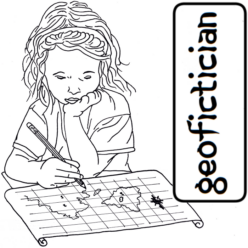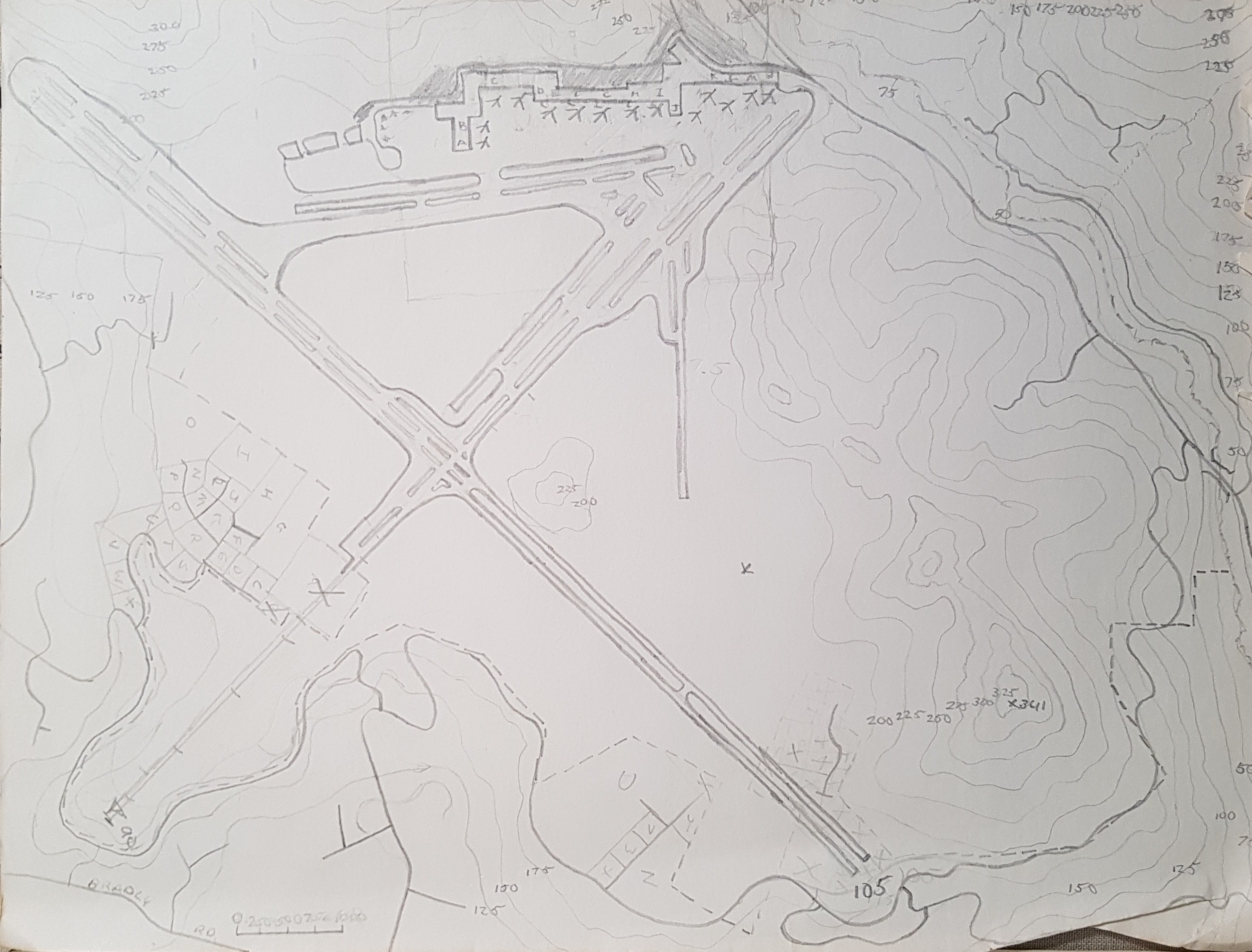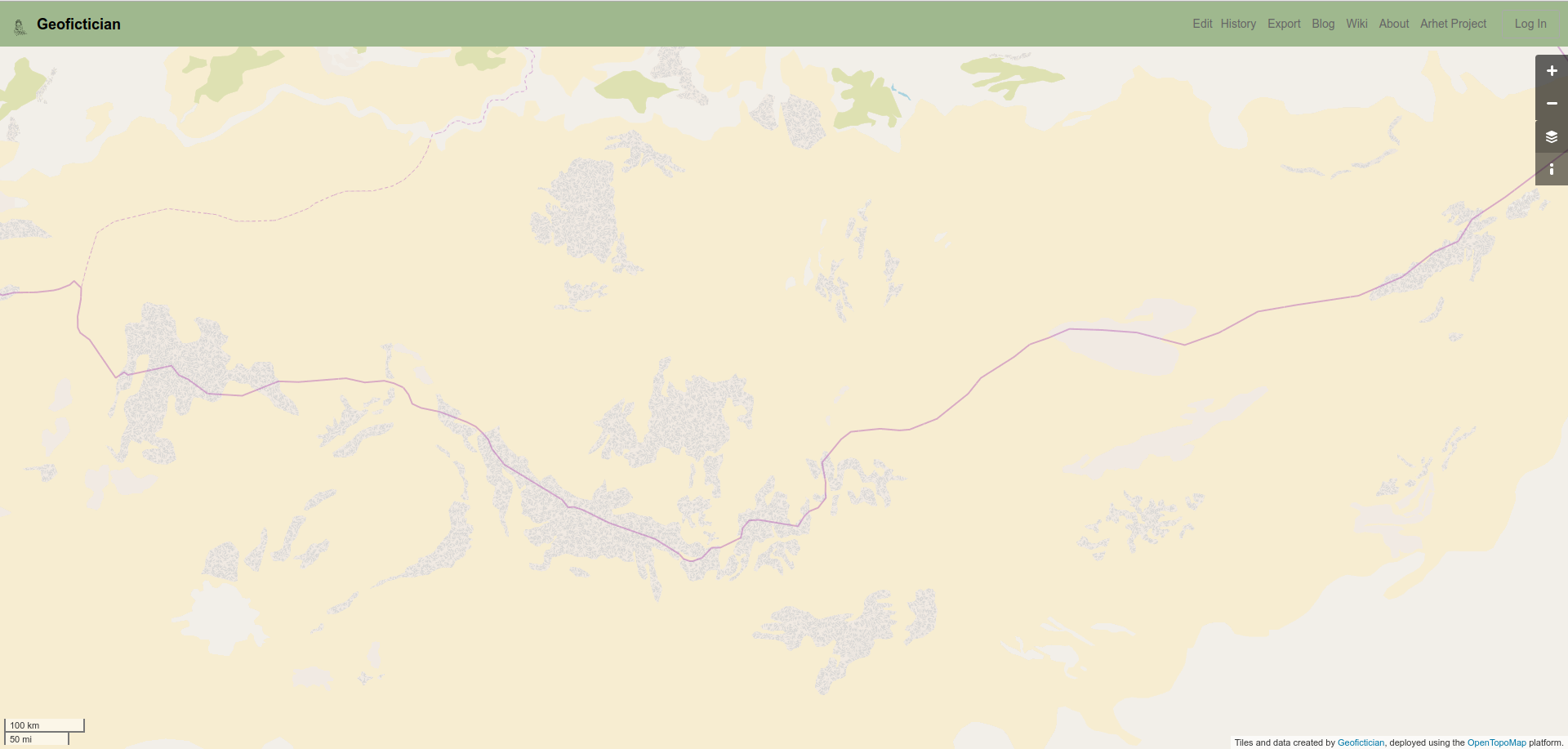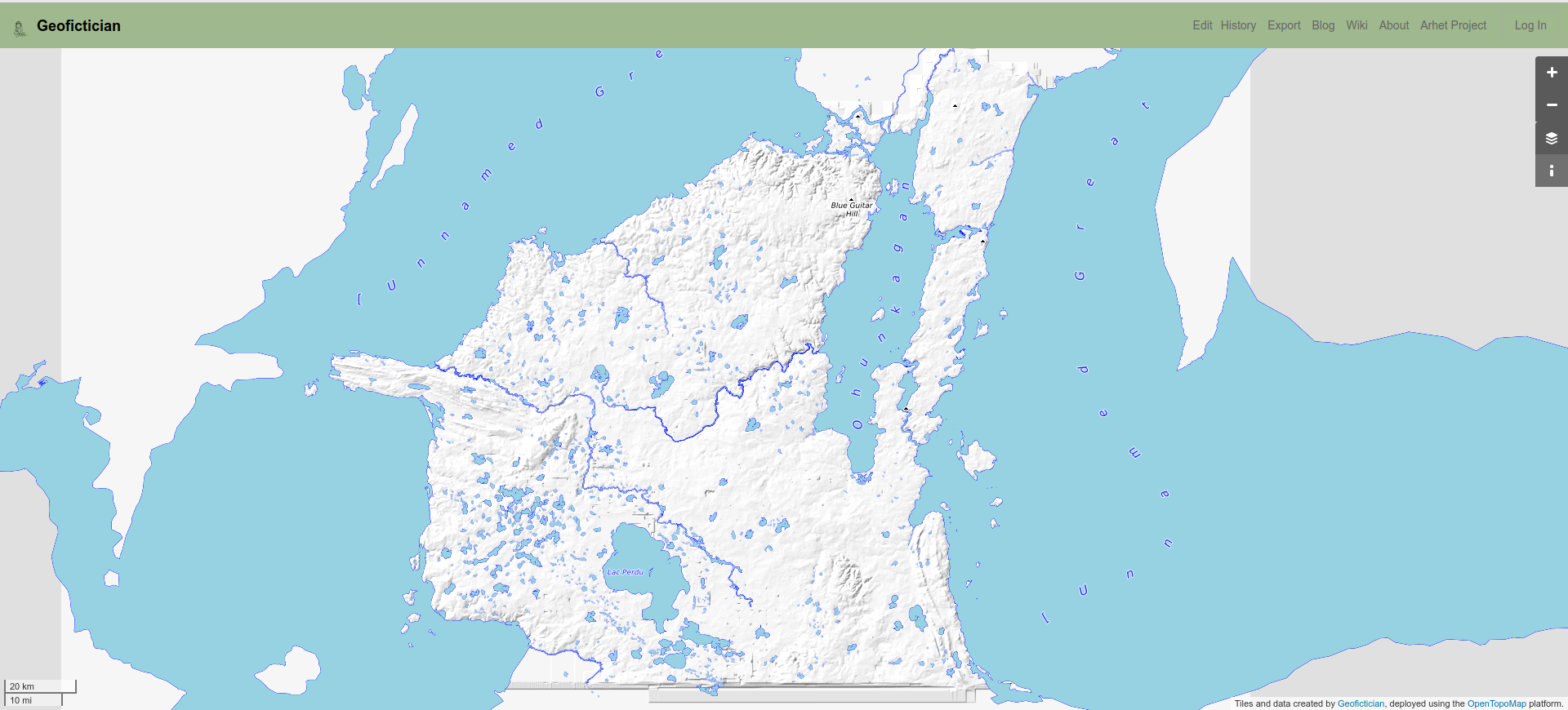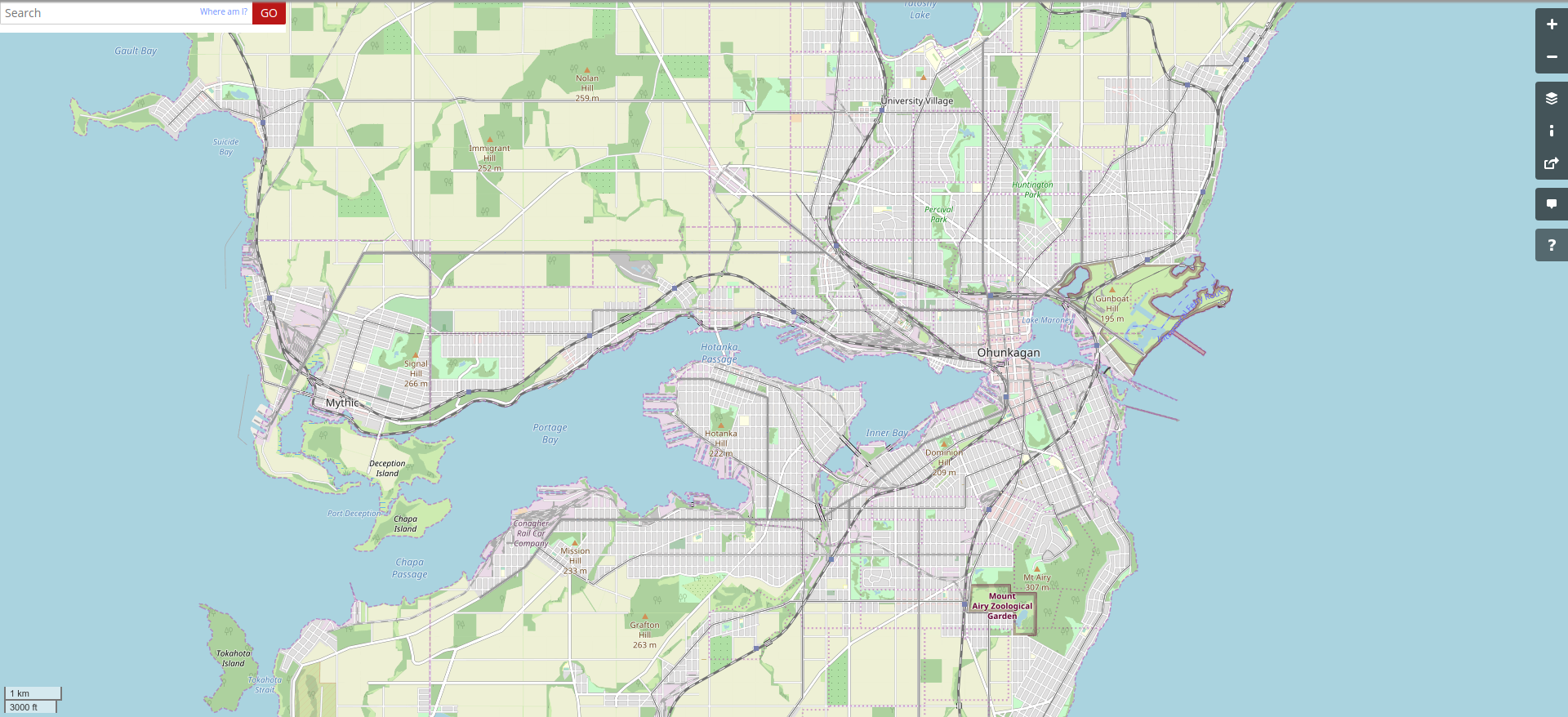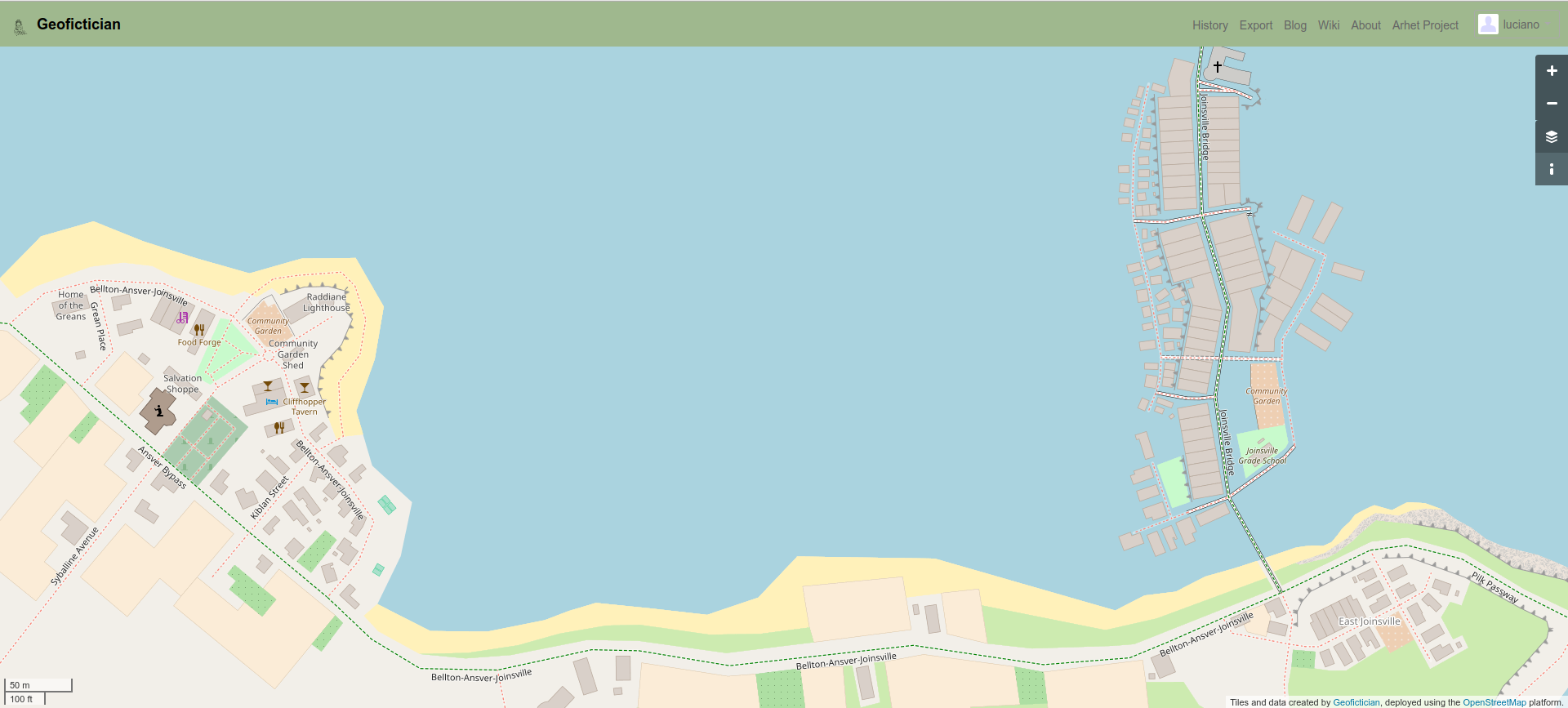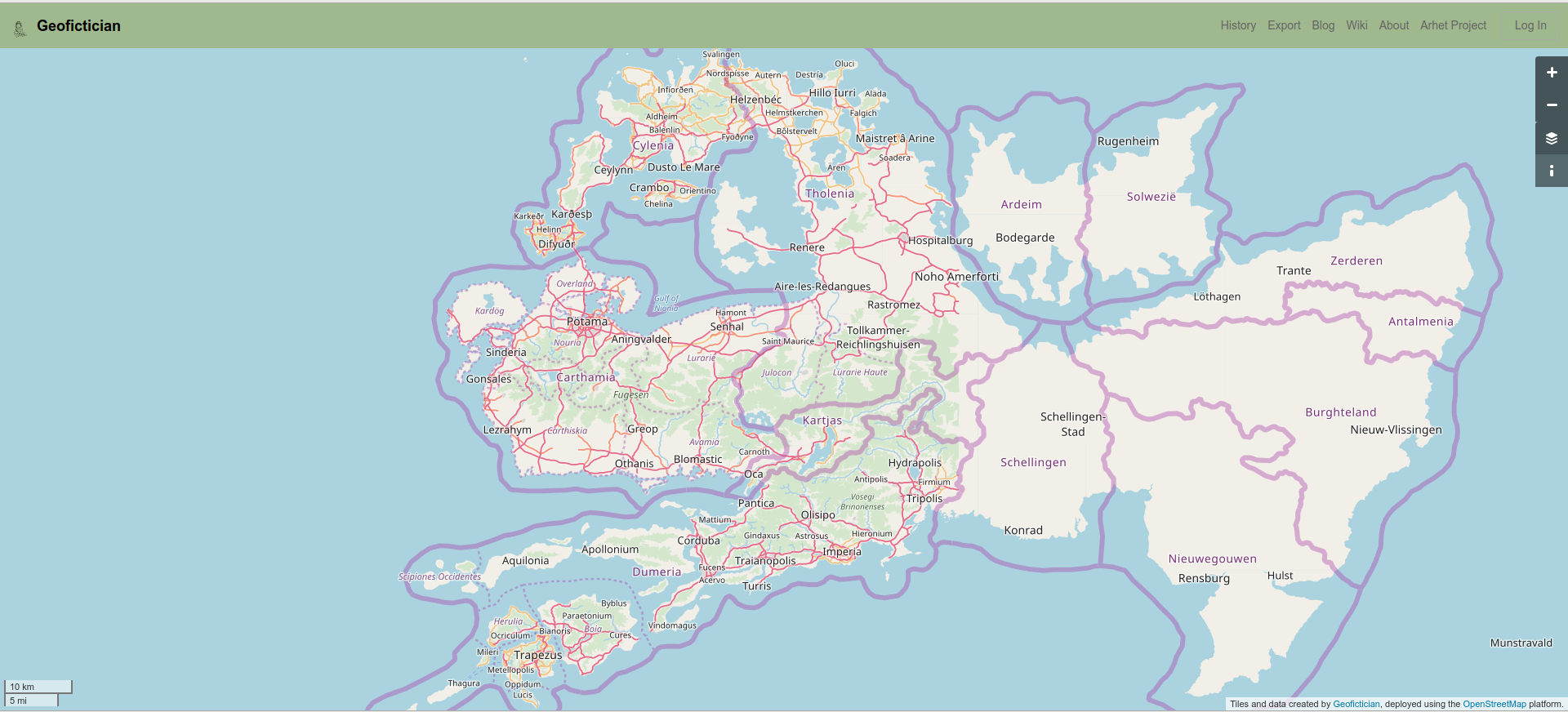I missed last week, so there is no week 8. Sorry.
The best mapping in Arhet for this week.
User Moskva, here.

Not that it’s great. But Arhet is a low-volume project, so far, so we can’t be too choosy.
These “mountains” are… not really mountains.
Firstly, in a cartographic sense, there is no such thing as “mountains” – there are contour lines, and there are peaks, and there are (sometimes) areas of forest. These water-tagged areas seem to represent isolines of a certain elevation, as a kind of stand-in for the concept “mountains.” Considered as isolines, they aren’t too bad.
Secondly, it hardly needs to be pointed out that mountains are not water. So the tagging as water is an egregious case of “tagging for the render.” I suppose I shouldn’t criticize this – I’ve been known to do such things myself, e.g. my Tehingdalish in The Deadlands, where my bottomless abyss is tagged as an intermittent lake. But that is different, I feel, because in that instance I’m tagging a feature that has no real-world equivalent with something that will show on the map.
Music to improve mapping by: Doit Science, “都市計画.”
